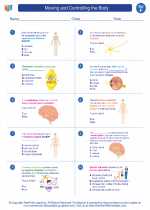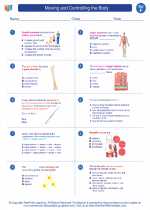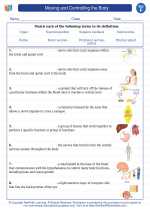Structure and Function of the Heart
The heart is a vital organ in the human body that pumps blood throughout the circulatory system. It is located in the chest, slightly to the left of the midline, and is protected by the rib cage.
Anatomy of the Heart
The heart is comprised of four chambers: two atria and two ventricles. The right atrium receives deoxygenated blood from the body and pumps it into the right ventricle, which then sends the blood to the lungs for oxygenation. The oxygenated blood returns to the left atrium, which then pumps it into the left ventricle. The left ventricle is responsible for pumping the oxygenated blood out to the rest of the body.
Function of the Heart
The main function of the heart is to pump blood throughout the body, delivering oxygen and nutrients to the cells and removing waste products. This is accomplished through a coordinated series of contractions and relaxations, known as the cardiac cycle.
Study Guide for the Heart
- What are the four chambers of the heart?
- Describe the path of blood flow through the heart.
- What is the function of the atria and ventricles?
- Explain the role of the heart in the circulatory system.
- What is the cardiac cycle?
Use this study guide to review the structure and function of the heart. Understanding the heart's anatomy and physiology is crucial for comprehending the circulatory system and overall human health.
.◂Science Worksheets and Study Guides Sixth Grade. Moving and Controlling the Body

 Worksheet/Answer key
Worksheet/Answer key
 Worksheet/Answer key
Worksheet/Answer key
 Vocabulary/Answer key
Vocabulary/Answer key
 Vocabulary/Answer key
Vocabulary/Answer key
 Vocabulary/Answer key
Vocabulary/Answer key
